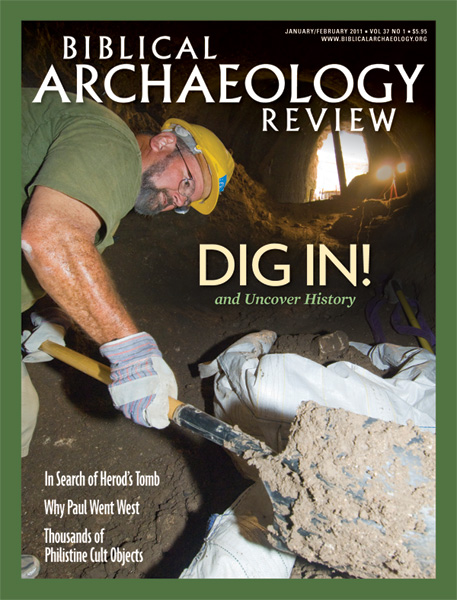Biblical Archaeology Review, January/February 2011

Features
Help solve the case of the missing history. An archaeological dig may not have all the glitz and glamour of a TV police drama, but the clues you’ll gather and the evidence you’ll examine will have a real-life impact on our understanding of ancient cultures. Our annual guide to excavations can help you find the dig that’s right for you.
Josephus tells us that the site of Herodium was the final resting place of the skilled builder and hated king Herod the Great, but Josephus failed to identify the exact location of the tomb. For 35 years, Herod’s tomb eluded archaeologist Ehud Netzer. Finally in 2007 a ruined mausoleum and a smashed sarcophagus were uncovered, providing the long-sought answer. But excavations at Herod’s magnificent eponymous desert retreat have now revealed much more, including a royal theater box with colorful paintings.
The Jewish diaspora in Roman times and Late Antiquity was not just a scattering of people from the Land of Israel. Geographical, cultural, religious and language differences resulted in two distinct diasporas—western and eastern—which helps explain why Paul went west from Jerusalem.
Long known as the birthplace of rabbinic Judaism in the first century C.E., Yavneh is rich in both Jewish and Christian history. We now know that a Philistine temple was located here as well: Recent excavations have produced thousands of eighth-century B.C.E. Philistine cult objects—all found in a repository pit in a single 5-square-meter excavation. What still lies buried here?
